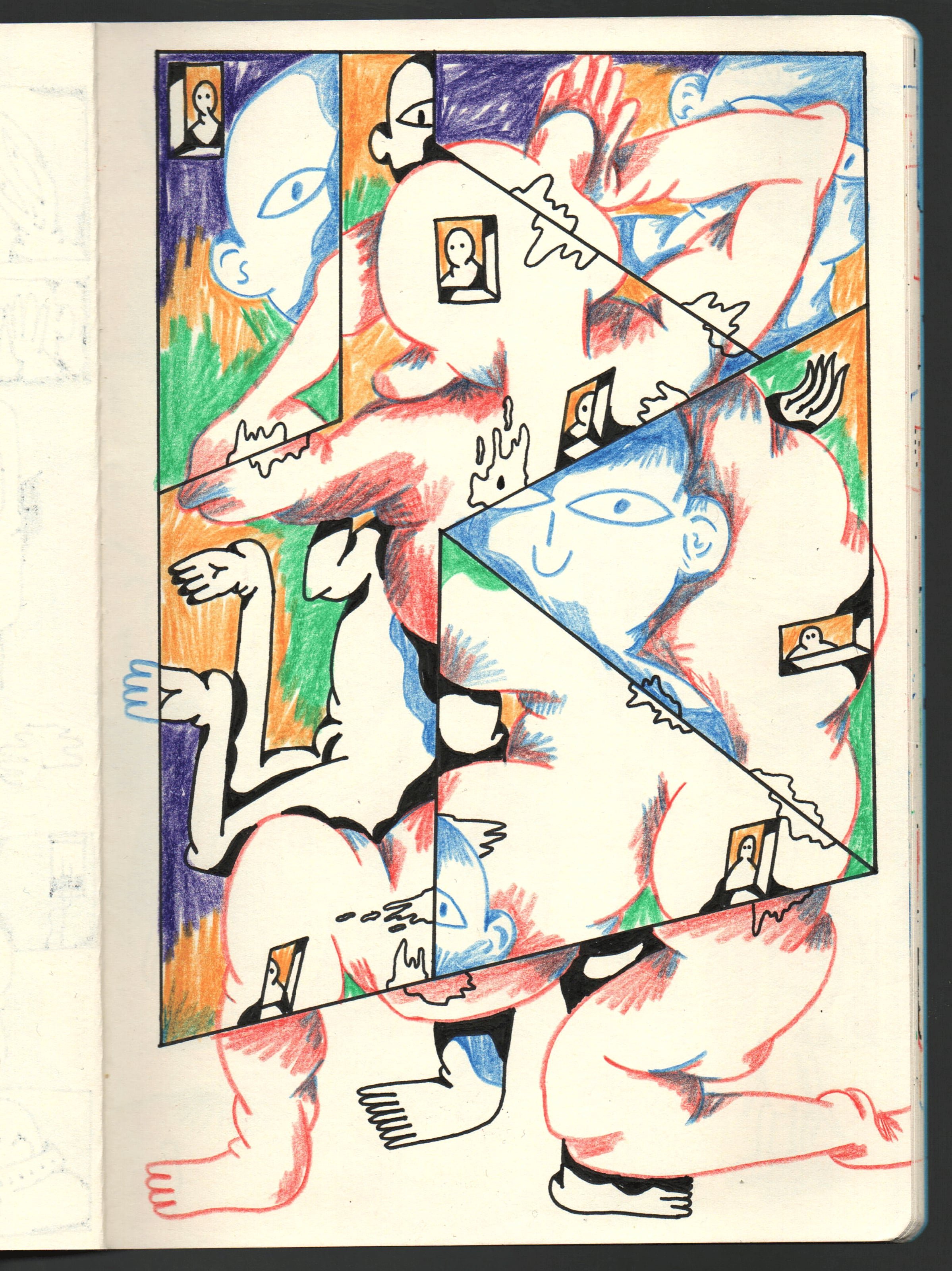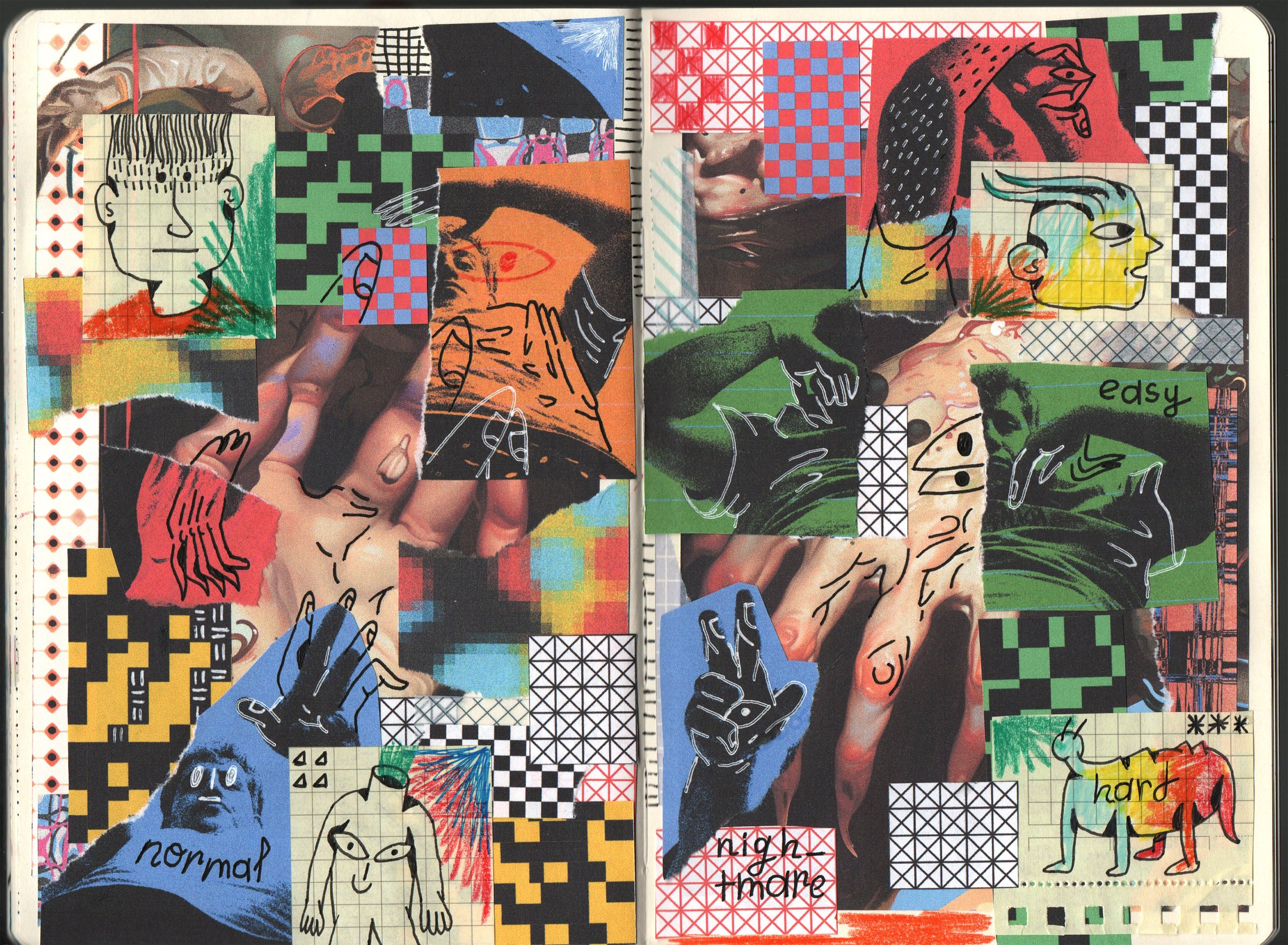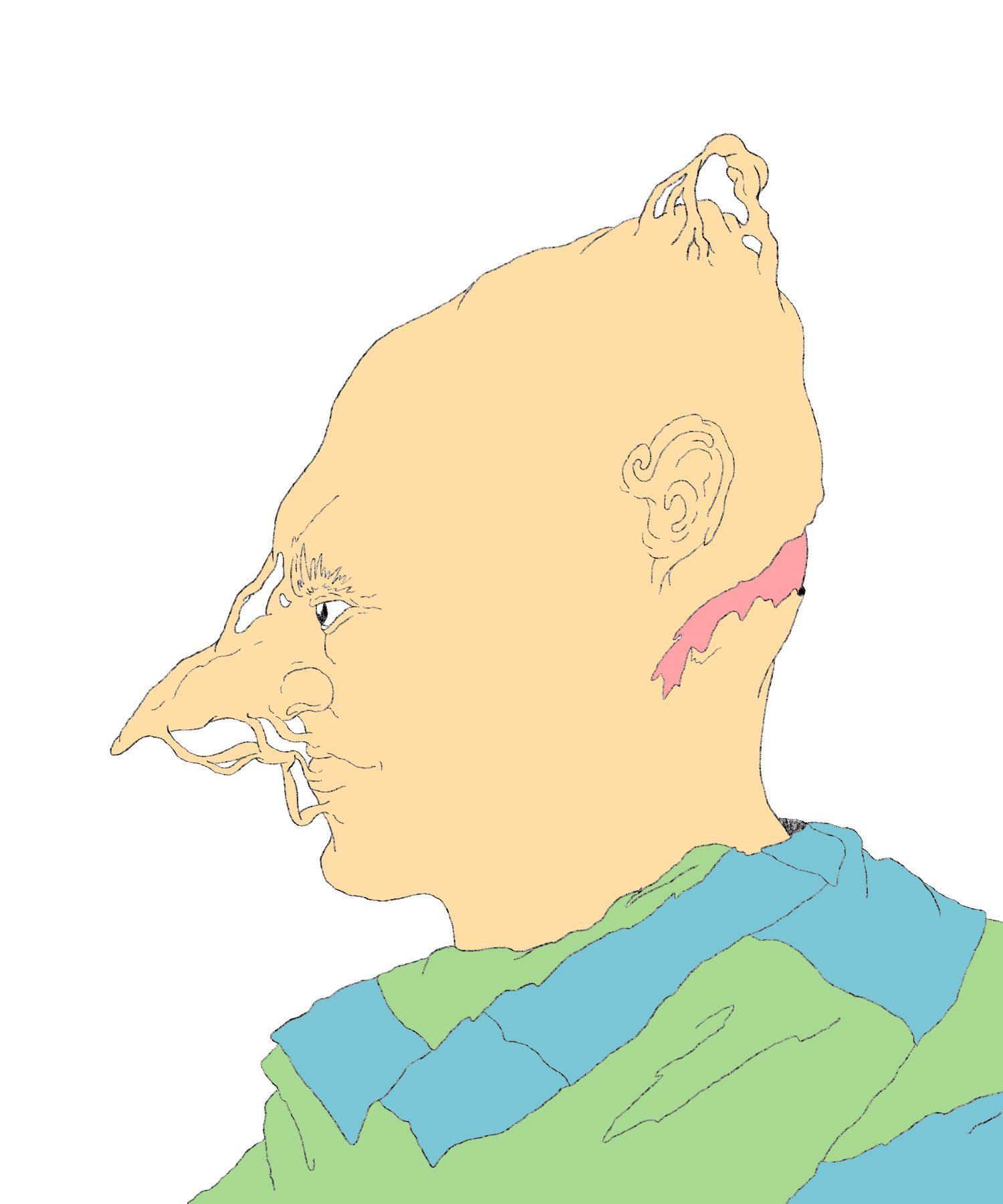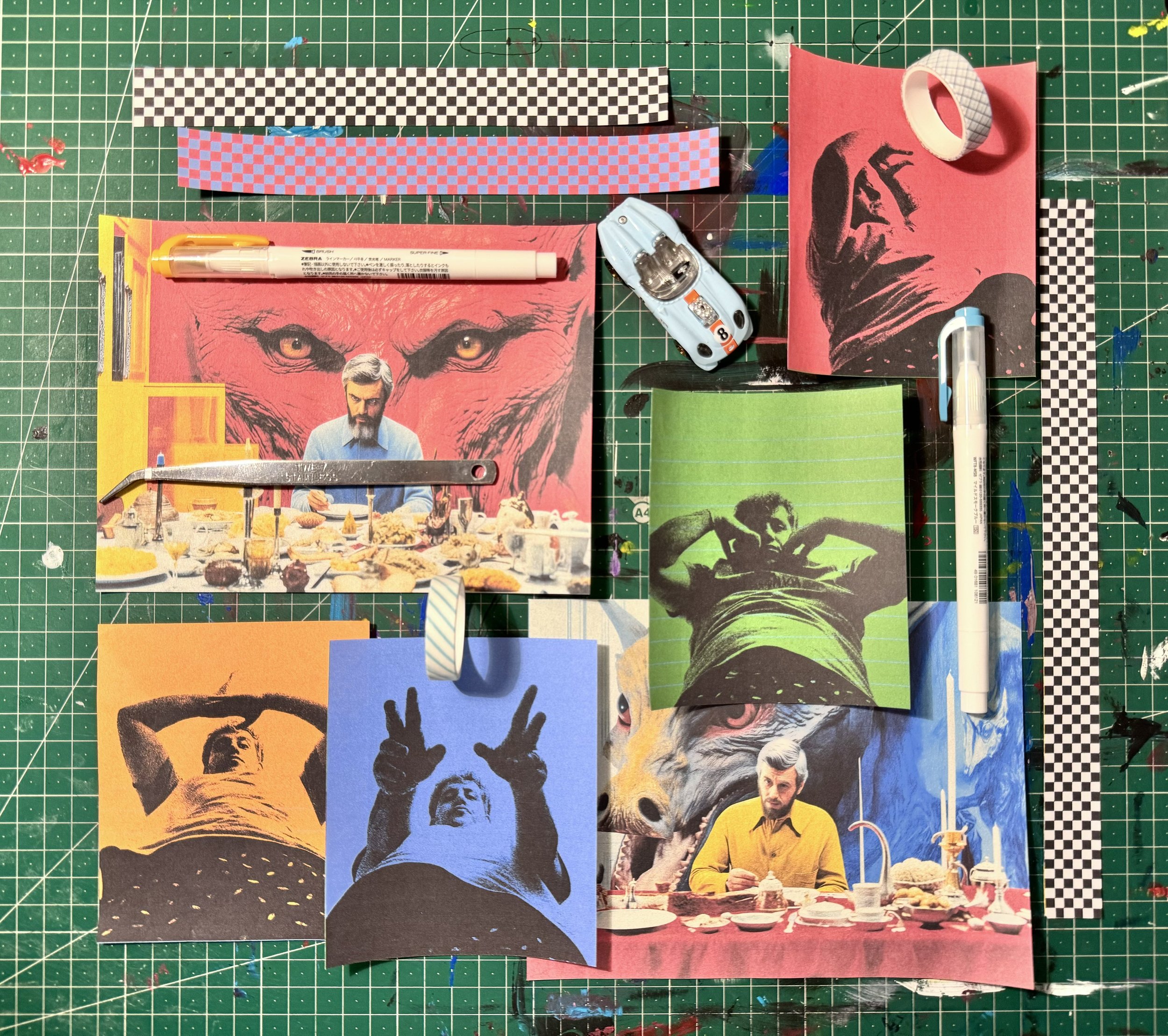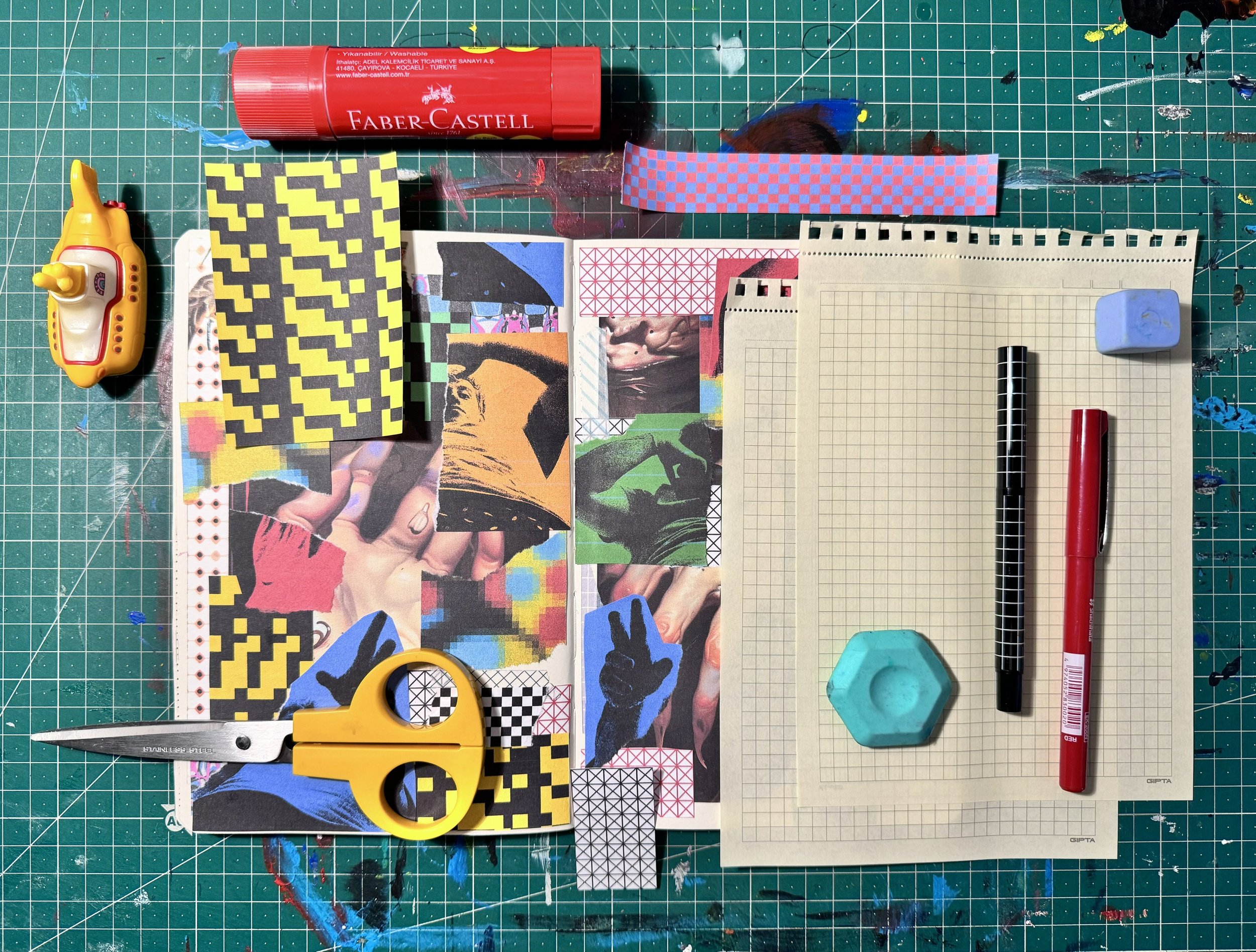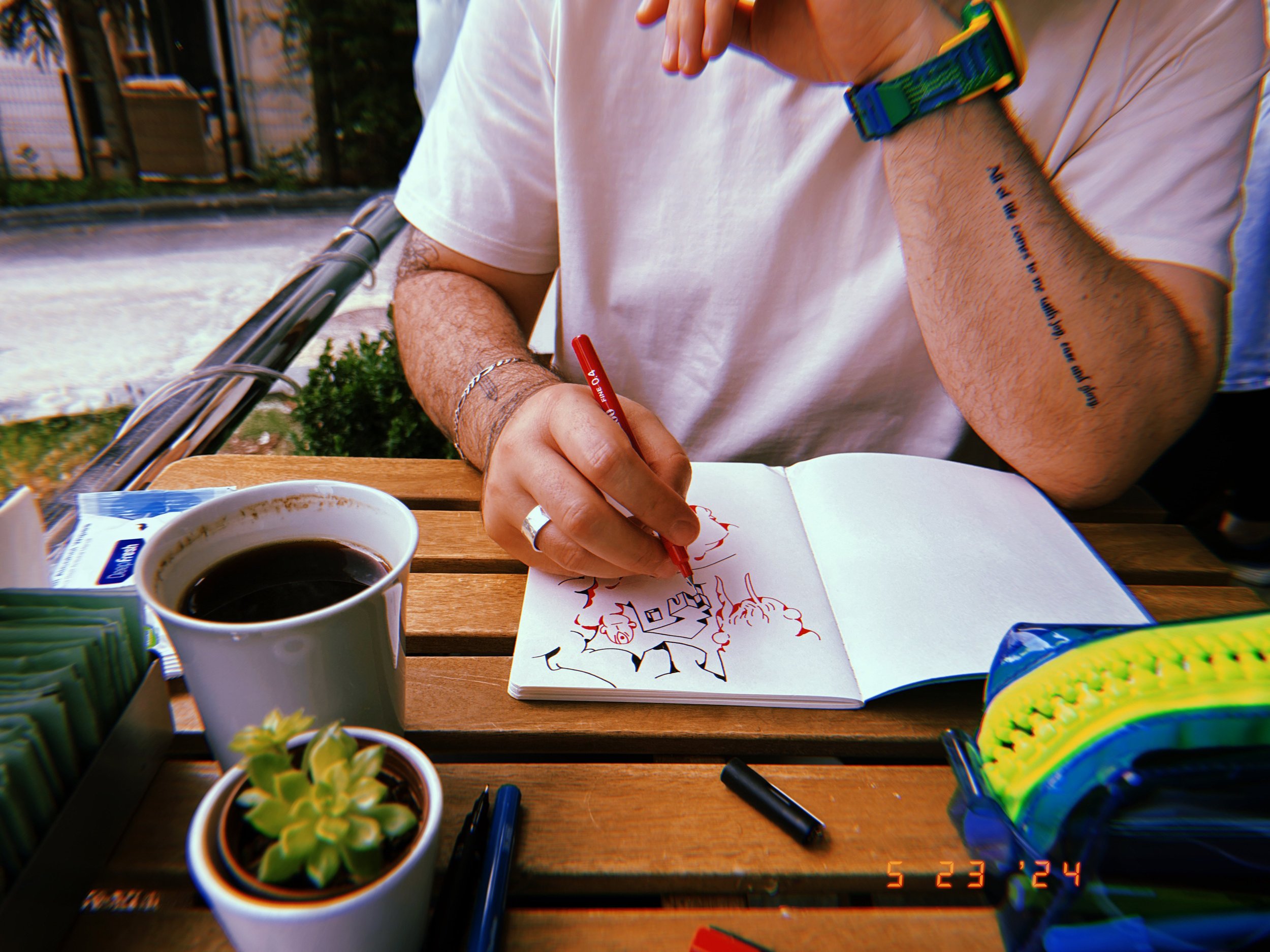The Dark Sides of the Mind: An Interview with Demon Ego
“The reason I started creating art is rooted in the traumas caused by horror movies I watched as a child and the nightmares they triggered.” Demon Ego
@demonegoo took us on a journey through his artistic evolution, exploring how childhood fears and nightmares have shaped his unique approach to art and healing.
The Dance of a Parched-Mouthed Creature, Demon Ego
“The reason I started creating art is rooted in the traumas caused by horror movies I watched as a child and the nightmares they triggered. In these nightmares, I often fought or hid from monsters, demons, and supernatural beings, deepening my fears. I still vividly remember some terrifying experiences related to these supernatural entities and the fear of death, which left a profound impact on me and are reflected in my art today.”
“This process eventually led to a journey of healing, where I began to overcome my nightmares and normalize my monsters by drawing them. I started sketching in my notebooks around the age of 9-10; initially, I drew protected, secure spaces. Later, these spaces were surrounded by monsters, and I eventually decided to open the doors to them. We have coexisted for a long time, and they have taught me a lot about myself and my art.”
Demon’s influences range from horror movies and mythology to psychology and philosophy. “These inevitably interconnected fields are areas I constantly explore and draw inspiration from due to my curiosity about the dark, unanswered aspects of humanity and art. Horror movies hold a special place in my life because the exciting, surprising, chilling, and uncanny feelings they evoke have given birth to and continue to develop my art. I watch horror films both while creating and searching for new topics for my work. The courage and the "sharp edges" that touch the human mind in these films bring me great joy. In a sense, what created my childhood traumas is also what fulfills me.”
Demon Ego is a multimedia artist who rejects attachment to any specific field:
“No matter how I am defined by a specific field, medium, or style, not adhering strictly to these definitions keeps my art more liberated, allowing me to experiment and avoid being confined within a framework.”
“As someone who quickly becomes bored and strives to avoid repetition in both art and life, I have always preferred this freedom. The idea of mastering one technique or being known for a single style is terrifying to me. I prefer not to walk the same path tomorrow that I walked today; while the destination may be the same, I must first surprise myself and see new streets each time. This approach makes exploring dark themes and the human soul more exciting and allows me to experience the process more realistically in my mind.”
Demon, who studied fine arts and worked as a research assistant, shares insights into his academic journey: “Up to this point, I have centered all my academic work, starting from my master's degree, on research related to supernatural beings. My sole purpose has always been to work on topics that I am curious about and thus enjoy. I can confidently say that even if I were not engaged in academic studies, I would still be working on the same subjects.” Although he didn’t complete his qualifying thesis, he notes that “conducting academic research has certainly increased my chances of encountering various sources and people, allowing me to deepen my studies and enrich my readings.”
Let’s go through Demon’s creative process: “I usually start everything by choosing an emotion. This isn't a deliberate selection or elimination process; something needs to stir in my mind and excite me. This emotion could be something I am currently experiencing, which generates new questions and answers in my mind. Whatever it is, it must have a dark side, allowing me to explore and answer why and how it exists through my art. After this stage, everything proceeds experimentally and without a plan. I create individual visual elements and then begin arranging the composition so that these seemingly independent pieces come together to form a story inspired by that emotion.”
“Sometimes, a piece doesn't fit within the whole, and I archive it for use in a more suitable story later. I view the multi-part GIFs or animated collages I create as short films, offering glimpses into my life.”
His goal is to solve nightmares and fears through art: “My goal remains unchanged and unresolved, and I am doing everything I can to keep it that way. I still have nightmares, but they haven't been frightening for a long time; instead, they inspire me and keep my mind "healthy" for creating new works.”
“There are countless themes and images representing abstract fears, and each artist's unique interpretation of these limitless contents provides an avenue that simplifies my work, even allowing me to "cheat" in a sense. Everyday situations, disasters, human and animal emotions, words, music, etc., all serve as different materials to create elements of fear. I seek to capture the subtle tensions within all these elements, giving me an unlimited supply of material.”
“I invite those who view my art to a cinema to watch my "short films," leaving them to experience the uncanny and the surprises in each material detail I use.”
Brought by Weightless Waves, part of his new drop ‘Hypnagogia’
“I always leave room for imperfections, non-sterile materials, unplanned compositions, and character designs. Despite this, the human mind tends to make plans and strive for a logical progression and completion of the work. As someone with a design education, I often feel this but try to break free from it. My admiration for the complex nature of the human spirit and the imperfect, non-sterile nature of the natural world underpins my strong belief in achieving realism in all art forms. Influenced by cinematic realism, minimalism, and the grotesque, I embrace the unadorned reality of nature and humanity. These inspirations avoid embellishment, alteration, or perfection. They aim to create the sensation of an absent director by simply placing the "camera" and allowing everything to appear as it truly is. I believe this approach enriches the work, narrates the creation process, and enables each viewer to find something personal and relatable in the piece.”
“My works are essentially my short films; cinema, especially horror and thriller films, was my initial source of inspiration and still holds that priority. In media where I can create moving parts (camera, GIF and video editing programs, AI video tools, etc.), I discover excellent options to convey dark themes. I sometimes search for these consciously and sometimes stumble upon them, deciding to use the tension they create after experimenting. I create experimental pieces by distorting, repeating, or deleting frames. This experimental approach, dealing with the uncertain, incomplete, exaggerated, or distorted, always has the potential to create tension. They offer unexpected visuals, much like distorted bodies. On the other hand, a static image, or a "silent" piece, can be just as tense as a sound piece because we mentally add a sound to it. The mind games used by directors and artists in works I've deciphered or watched also inspire me, and I employ these mental tension games in my experimental, tension-filled movement pieces. The descriptions of your pieces are profound stories.”
“Writing stories and adding scripts to my works is another significant step for me. This process is entirely related to how I feel and the depth it creates within me when I look at the work. I view the piece as an outsider and ask myself, "If I were a writer or screenwriter seeing this in an exhibition, what story would this piece inspire?" Sometimes, I write the story inspired by a single frame or detail of the visual. By writing the story, I also want to show that I am not just satisfied with the visual alone and to convey that the creation process is ongoing. Words, sounds, and images are parts with different depths, and my goal is to combine them all to achieve much more diverse and profound dimensions.”
Today, Demon Ego presents on objkt ‘Hypnagogia’: 20 unique works, marking a new phase in his engagement with AI.
The term hypnagogia refers to the transitional state between wakefulness and sleep, where fleeting yet vivid sensory hallucinations—visual, auditory, and tactile—can emerge. These experiences, often surreal and disorienting, have long fascinated psychologists and neuroscientists as they probe the boundaries of perception and consciousness.
Discover the pieces on objkt
Frame from ‘We Don’t Know How Much More Will Spill’



